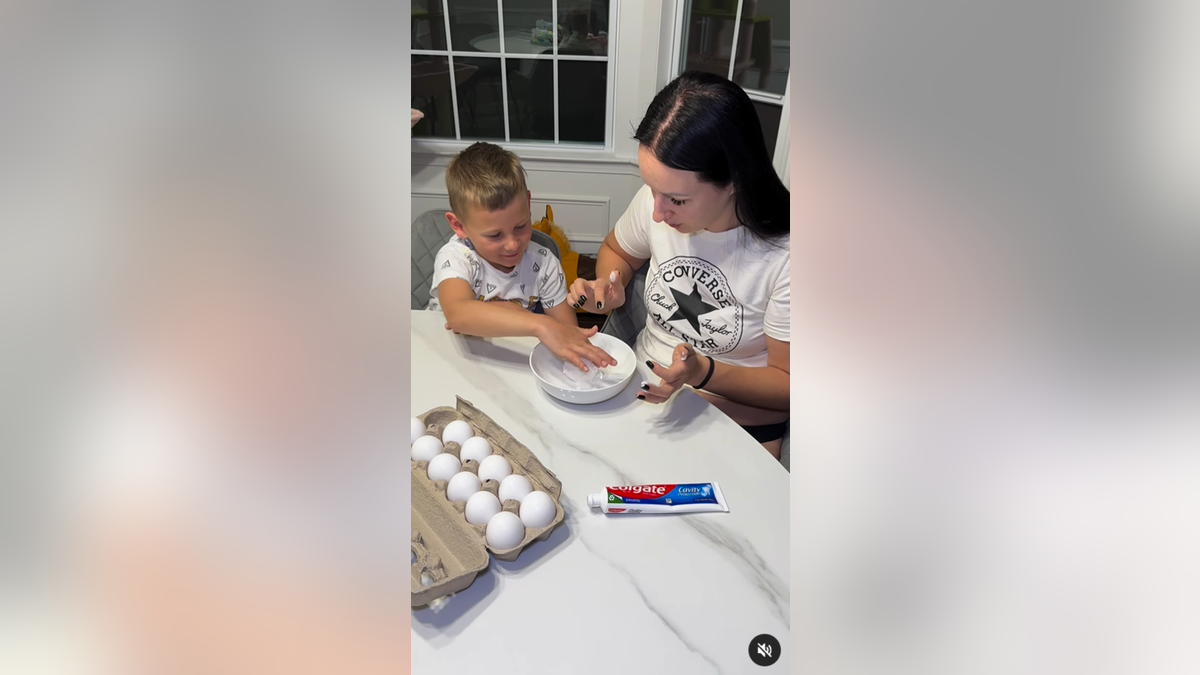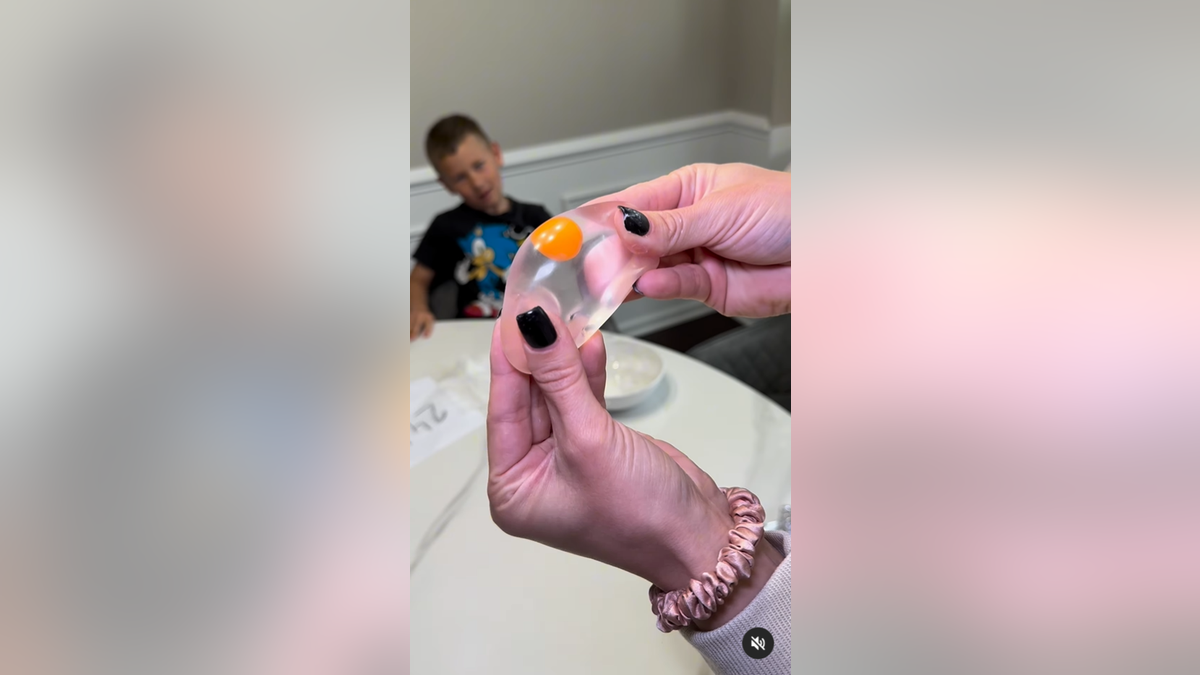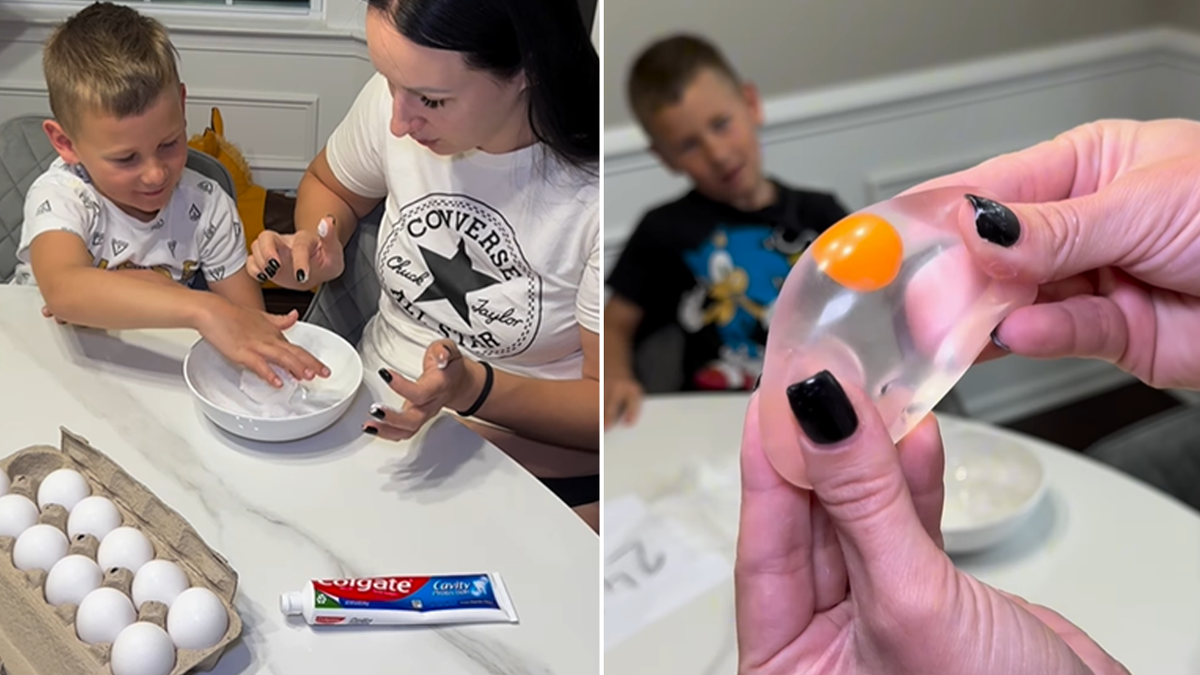An egg “experiment” has exploded online, and social media users have been questioning whether the viral trick is an experiment at all.
Yana Kuzmich, a digital creator who posts under the handle @awesome_motherhood, was one of many users who shared an Instagram video of herself trying the trick.
Using just an uncooked egg, toothpaste and aluminum foil, Kuzmich and her son “created” a jelly-looking egg.
MOM’S VIRAL VIDEO OF BABY UNIQUELY FASTENED TO AIRPLANE SEAT IGNITES FIERY DEBATE ON SOCIAL MEDIA
The video garnered more than 30 million views.
The video shows Kuzmich placing an egg in a bowl and applying toothpaste to its exterior.

An egg and toothpaste trick has social media users debating whether the experiment is real. (@awesome_motherhood)
Kuzmich then takes a sheet of aluminum foil and covers the bowl, leaving it to sit for 24 hours.
Once the time is “up,” her son then picks up the egg from the bowl — revealing a jelly egg.
He beams with excitement as he picks it up and tosses it around.
VIRAL FLOWER HACKS ARE BUSTED BY FLORAL EXPERT
Jennifer Mencias-Munoz, a health science educator at the Children’s Museum in Houston, Texas, told Fox News Digital that the experiment would never work with the two components that are reportedly used.
“In science, we would call [toothpaste] a base so it’s the opposite of an acid. The egg is also a base. When you put these two together, we don’t really see a reaction,” she said.
“You would see a reaction if you used a chemical that is the opposite. Like, for example, acid to the egg.”
“When you put these two together, we don’t really see a reaction.”
Mencias-Munoz said her team has presented a similar experiment at the museum, creating a jelly-like egg.
“You dip a raw egg in vinegar and you leave it for 24 hours, if not more,” she said.
For more Lifestyle articles, visit foxnews.com/lifestyle
“After that time, what happens is the acid, inside the vinegar, breaks down the eggshell that’s made of calcium carbonate. So it’s going to break it down. And then you’re going to get this not necessarily clear, but kind of like a translucent egg. And it’s going to feel a lot more like rubbery because you’ve broken down that membrane of the egg.”

The video of the egg and toothpaste trick has gotten some 30 million views. (@awesome_motherhood)
Don Riefler, a science educator at The Children’s Museum of Indianapolis in Indiana, agreed.
“Eggshells are almost entirely made of calcium carbonate (same thing that Tums, chalk, limestone, and snail/clamshells are made of),” Riefler told Fox News via email.
The “calcium carbonate is actually an ingredient in toothpaste!” he added.
“It’s a mild abrasive they put in to help remove crud from your teeth. If there’s no chemical reaction between it and the other ingredients in toothpaste in the toothpaste itself, there certainly wouldn’t be one with an eggshell.”
“That’s a fake egg, but I like the video and idea.”
Social media users took to the comments section to hash out whether they believed the experiment to be legitimate or not.
“Tried twice just to make sure. Ruined two perfectly good eggs,” one woman commented.
“If you can’t tell it’s fake, I am deeply concerned,” said one user.
CLICK HERE TO SIGN UP FOR OUR LIFESTYLE NEWSLETTER
It appears one woman fell for the prank, commenting, “Thank you for sharing – can’t wait to try.”
“Trust issues starting,” said another user.
“That’s a fake egg, but I like the video and idea,” said another.

Social media users weighed in on whether they think the egg-and-toothpaste trick is real or not. (@awesome_motherhood)
Kuzmich admitted to Fox News Digital in an email that the video was a joke.
She said she came across the trick online and that her son was “happily surprised.”
Several people have attempted the egg-and-toothpaste “experiment” on social media, with some truthfully revealing that it is indeed fake — while others pretended the rubber egg was the result.
One TikTok user not only debunked the trick — but revealed where anyone can purchase the rubber egg online.
https://www.foxnews.com/lifestyle/viral-egg-toothpaste-experiment-instagram-questions-real-fake


